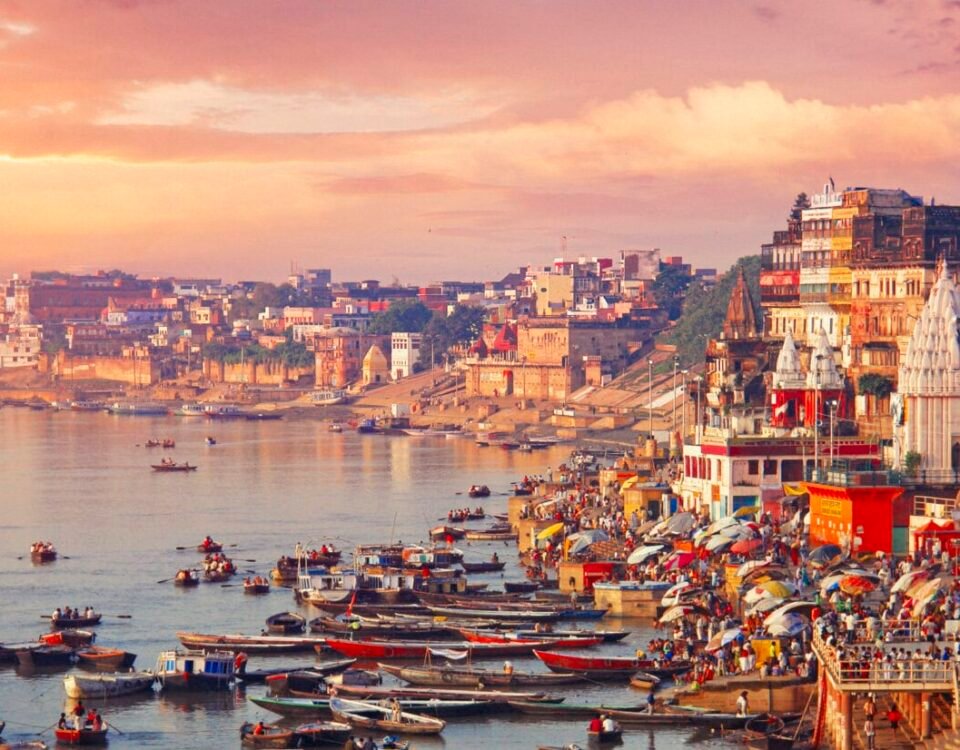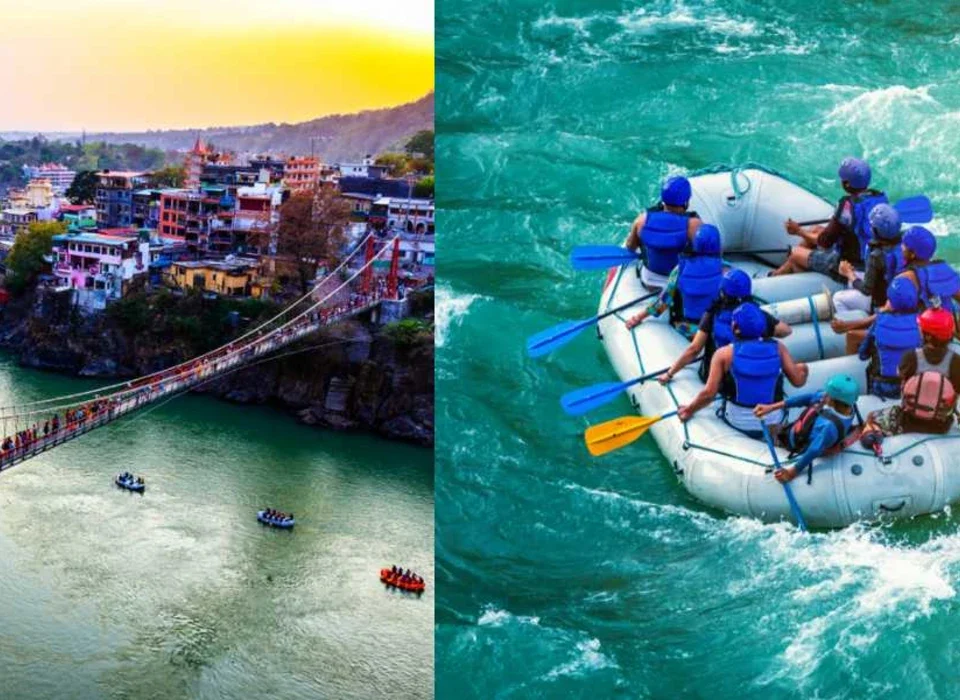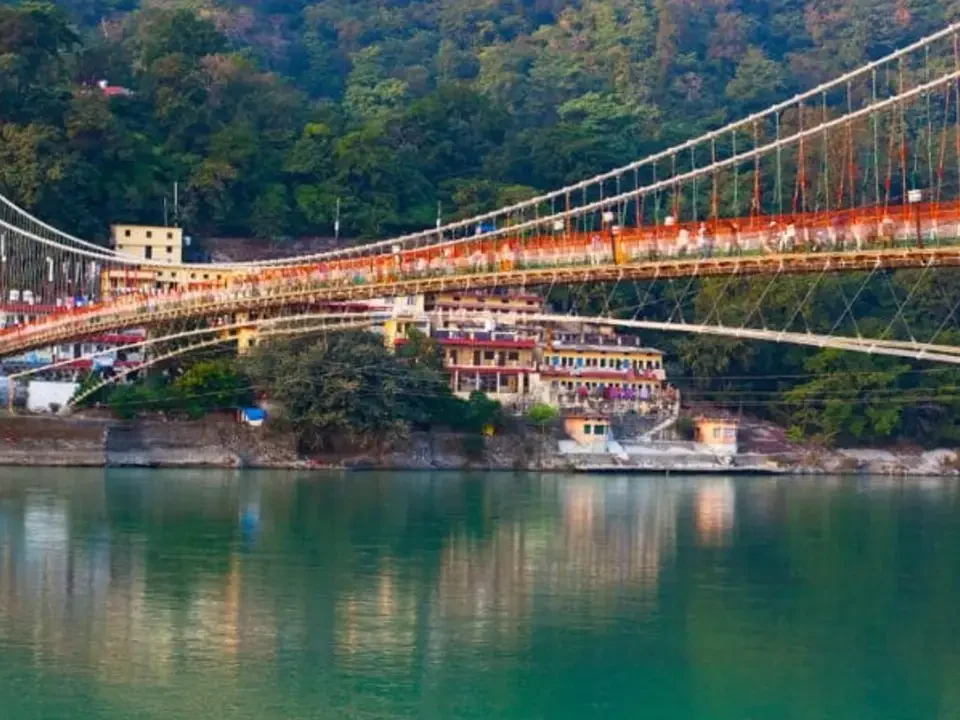Jaisalmer Fort: History, Timings, and Why India’s Golden Living Fort Still Stands Tall

Bhangarh Fort: Haunted Stories, History, and the Ghostly Legend of Rajasthan’s Most Mysterious Fort
July 14, 2025
Red Fort Delhi (Lal Kila): History, Facts, Builders & Timings of India’s Iconic Monument
July 17, 2025Introduction – The Golden Mirage in the Thar
Amidst the endless golden dunes of Rajasthan stands a living legend — Jaisalmer Fort, famously known as the Golden Fort or Sonar Quila. Rising majestically from the heart of the Thar Desert, this architectural marvel is not just a historical monument but a thriving township, making it the only living fort in India where people still reside within its sandstone walls. Bathed in golden hues at sunrise and sunset, the fort seems like a mirage carved out of light, capturing the imagination of travelers, historians, and photographers alike.
A walk through its winding alleys feels like stepping back into a medieval era where history whispers from every corner. From intricate Jain temples and royal palaces to bustling marketplaces and rooftop cafés, Jaisalmer Fort offers an immersive experience that blends the past with the present. Whether you’re fascinated by Rajputana architecture, keen to witness desert life, or planning a cultural escape, this fort is a centerpiece of any desert journey.
To explore this majestic landmark as part of a curated travel experience, check out this Jaisalmer City Tour and step into the golden pages of Rajasthan’s history.
Jaisalmer Fort History – Built from Desert and Dreams

The story of Jaisalmer Fort begins in the year 1156 AD, when Rawal Jaisal, a Rajput ruler from the Bhati clan, founded the fort atop the Trikuta Hill in the heart of the Thar Desert. His vision was bold — to build a fortified city out of desert stone that could stand the test of time, war, and weather. Today, that vision lives on as the iconic Jaisalmer Fort Rajasthan, a testament to Rajput resilience and craftsmanship.
Often described as a golden mirage, the fort is a brilliant example of Rajputana architecture, combining military precision with intricate artistry. Its massive yellow sandstone walls reflect the sunlight during the day, giving it a golden glow — hence the name Golden Fort. Inside, the fort housed royal palaces, Jain temples, and elaborate havelis with latticed windows, carved balconies, and courtyards that told stories of both royalty and religion.
Throughout its history, the fort witnessed several invasions, notably from the Delhi Sultanate and the Mughals. Yet, it thrived due to Jaisalmer’s strategic position on the ancient Silk Route, becoming a major center for trade in opium, silk, and spices. Merchants built their homes inside the fort, adding to its cultural richness and making it a bustling hub of commerce and diplomacy.
The Golden Fort: Why It’s Called “Sonar Quila”
Locally revered as Sonar Quila, which translates to “Golden Fort,” Jaisalmer Fort earns this poetic name from the honey-golden sandstone used in its construction. As the desert sun rises and sets, the fort glows with a radiant hue, almost as if it’s been painted with molten gold. This mesmerizing transformation makes it one of the most visually striking structures in all of Rajasthan, and one of the most photographed too. It’s no wonder that golden fort Jaisalmer has become an iconic identity for the city.
At dawn, the first rays of sunlight cast a soft golden glow across the ramparts, while by sunset, the fort blazes in fiery amber, blending seamlessly with the desert landscape. This natural spectacle is so enchanting that it inspired famed filmmaker Satyajit Ray to immortalize the Sonar Fort Jaisalmer in his detective story “Sonar Kella.”
Life Inside the Living Fort of India

Jaisalmer Fort isn’t just a historical monument — it’s a living, breathing community. As one of the few living forts in India, it houses thousands of residents who have lived here for generations, giving visitors a unique blend of medieval charm and everyday life. Here’s what makes life inside the Golden Fort so fascinating:
- Residential Living: Over 3,000 people still call the fort home. Families reside in ancient stone houses passed down through generations, preserving both tradition and architecture.
- Bustling Bazaars: Narrow lanes within the fort are lined with handicraft shops, selling everything from Rajasthani textiles and jewelry to puppets and miniature paintings.
- Sacred Spaces: The fort includes seven ornate Jain temples and the revered Laxminath Temple, which are active places of worship frequented by both locals and tourists.
- Café Culture: Modern-day comforts meet heritage at rooftop cafés and guesthouses that offer panoramic views of Jaisalmer city and the surrounding Thar Desert.
- Sustainability Challenges: The fort’s sandstone structure is vulnerable to erosion, drainage issues, and tourism pressure. Preservation efforts are ongoing, but balancing daily life with conservation remains a major concern.
Jaisalmer Fort Architecture and Attractions
The grandeur of Jaisalmer Fort lies not just in its golden facade but in the exquisite details found within its ancient walls. A harmonious blend of military strength, religious devotion, and royal elegance, the fort is a masterpiece of Rajputana architecture. For those seeking in-depth Jaisalmer Fort information, the following highlights are unmissable:
- Raj Mahal (Royal Palace): Once the seat of Bhati rulers, the palace features intricately carved balconies, jharokhas, and courtyards. Its five-storey structure offers sweeping views of the desert beyond the fort walls.
- Jain Temples: Built between the 12th and 16th centuries, the fort’s seven Jain temples are architectural gems. Made of yellow sandstone, their elaborate facades, marble idols, and finely detailed frescoes celebrate the Jain legacy of this region.
- Laxminath Temple: Dedicated to Vishnu and Lakshmi, this temple stands out for its simplicity compared to the ornate Jain structures, yet holds deep spiritual significance among locals.
- Merchant Havelis: Many richly decorated havelis inside the fort belonged to wealthy traders from the Silk Route era. These include carved facades and latticed windows reflecting Indo-Islamic design influences.
- Gates & Bastions: The fort is entered through four massive gateways (Akhai Pol being the main) and is guarded by 99 bastions, 92 of which were built between 1633–1647.
For a more immersive experience, it’s highly recommended to take a guided walking tour or download an audio guide app. These resources offer detailed narratives, local anecdotes, and architectural insights that turn your walk into a cultural deep dive. Many apps now offer GPS-enabled storytelling, making your visit both informative and interactive — an ideal way to absorb the fort’s living heritage.
Jaisalmer Fort Timings, Entry Fees, and How to Reach

⏰ Timings
- Open daily from 9:00 AM to 5:00 PM (some sources mention 6:00 PM, but most official and tourism sites confirm the 9 AM–5 PM timing)
🎟️ Entry Fees (Starting Pirce)
| Visitor Type | Entry Fee |
| Indian Nationals | ₹50 |
| Foreign Tourists | ₹250 |
Note :- Prices May vary season to Season
🚶 Local Tips for Visitors
- Visit early: Arriving around 9 AM gives you calm lanes and crisp morning light—ideal for photography.
- Sunset glow: If planning your day, catch the evening light streaming through the fort gates and along the walls before closing.
- Plan 2–3 hours inside: That allows time for exploring the Raj Mahal, temples, museums, and hidden havelis at a relaxed pace.
- Best season: October to March offers comfortable weather, perfect for walking.
- Combine visits: Bring enough water, wear supportive shoes, and consider adding the adjacent Fort Museum or Gulzar Mahal for a richer experience.
🚗 How to Reach Jaisalmer Fort
- By Air:
- Nearest full-service airport is Jodhpur (~275–300 km away). From there, take a car, bus, or train to Jaisalmer.
- Jaisalmer also has a civil airport (~17 km from town) with limited regional flights.
- Nearest full-service airport is Jodhpur (~275–300 km away). From there, take a car, bus, or train to Jaisalmer.
- By Train:
- Jaisalmer is directly connected via rail to Delhi, Jaipur, Mumbai, Ahmedabad, and Jodhpur We Seek Travel.
- The fort lies about 1.8 km from the railway station—either a 20-minute walk or a short auto‑rickshaw ride.
- Jaisalmer is directly connected via rail to Delhi, Jaipur, Mumbai, Ahmedabad, and Jodhpur We Seek Travel.
- By Road:
- Accessible via national highways, with frequent Rajasthan State Transport (RSTC) and private buses.
- Road links from Udaipur (~490 km, 8–9 hrs), Jaipur (~567 km, 9 hrs), and Delhi (~765 km, 13 hrs).
- Once in Jaisalmer, the Fort is centrally located—easily reached by walking or via local transport.
- Accessible via national highways, with frequent Rajasthan State Transport (RSTC) and private buses.
✅ Expert Tip
Schedule your fort visit between 9 AM and 11 AM, then explore nearby beaches of havelis in the afternoon and return at 4:30–5 PM to watch the fort bathe in golden evening light—perfect for those breathtaking golden fort Jaisalmer shots.
Why Jaisalmer Fort Still Stands Tall in Indian Heritage

For nearly nine centuries, Jaisalmer Fort Rajasthan has endured the tests of time — not only as a silent witness to battles, prosperity, and change but also as a living symbol of India’s rich cultural and architectural heritage. Its value goes far beyond its golden ramparts. This is a place where history is not only preserved but also lived, every single day.
The Golden Fort, with its majestic structure and vibrant community, continues to inspire awe among historians, architects, artists, and travelers. Its significance lies in the way it merges royal legacy with everyday life — from the ancient Jain temples to the still-inhabited homes and shops that line its winding alleys. This enduring coexistence of heritage and livelihood sets it apart from other monuments frozen in time.
Despite facing modern-day threats like water seepage, uncontrolled tourism, and structural stress, restoration efforts by heritage conservation bodies and local stakeholders have kept the fort alive and resilient. It remains a beacon of Rajasthan’s pride, representing the spirit of the desert — indomitable, radiant, and deeply rooted in tradition.
Blending Heritage with Modern Journeys
While exploring India’s historic treasures, Jaisalmer Fort offers the perfect complement to broader travel routes like the Golden Triangle Tour With Ranthambore, where wildlife and royalty meet. Travelers often include Jaisalmer as part of extended heritage circuits such as the Golden Triangle Tour with Varanasi to experience the spiritual dimension of India, or the Golden Triangle Tour with Rishikesh for a taste of yoga, river rituals, and Himalayan serenity.
You can also customize your desert journey with the Best Rajasthan Tour Package, which often includes golden cities like Jaisalmer, Jaipur, and Udaipur — each echoing with stories of valor, devotion, and architectural brilliance. Some variations even offer a sacred twist through the Golden Trianlge Tour with Varanasi, combining history with spiritual exploration.
Final Words – The Golden Fort Awaits
In a world racing toward modernity, places like Jaisalmer Fort offer a rare pause — a chance to step into a realm where history whispers through stone walls and the golden desert wind carries tales of kings, saints, and merchants. As the sun sets and the Golden Fort gleams under the fading light, you’ll feel the weight of centuries wrap around you in the most enchanting way.
The best time to visit Jaisalmer is from October to March, when the weather is cool and the desert breeze invites long explorations. During this season, the fort is not just a destination — it becomes an experience, alive with festivals, music, and heritage all around you.So, whether you’re a history buff, a photographer, or a wanderer seeking the soul of Rajasthan, don’t let this gem slip past your journey.




